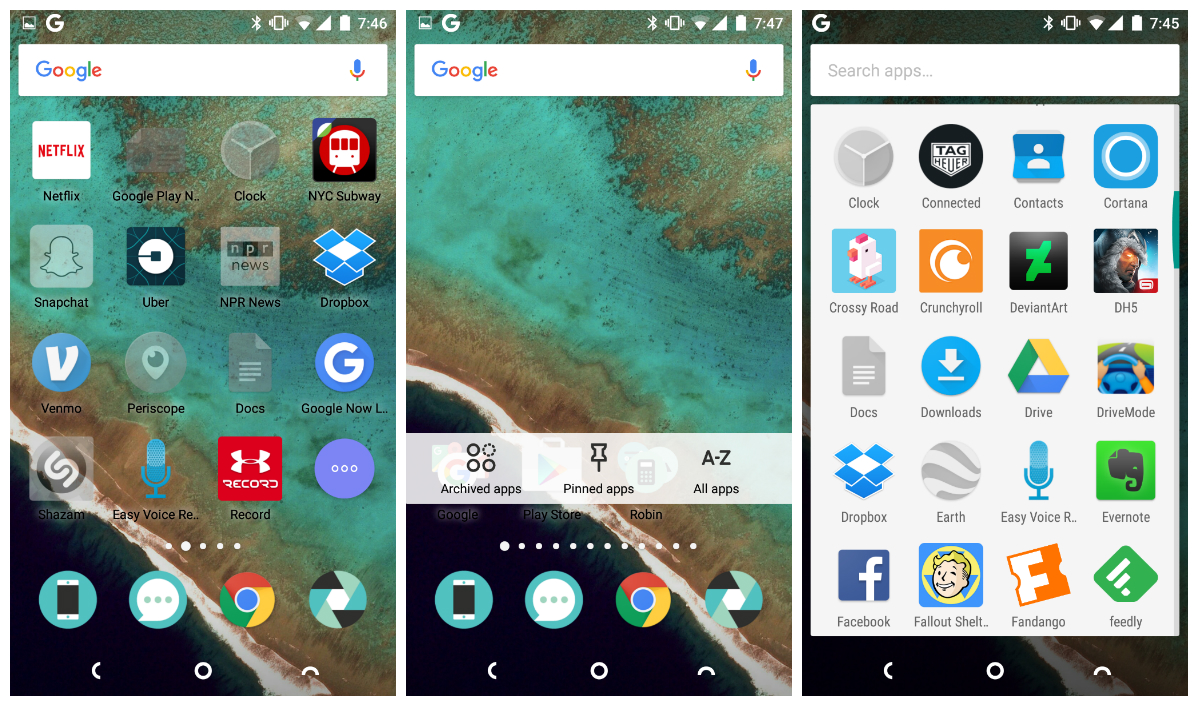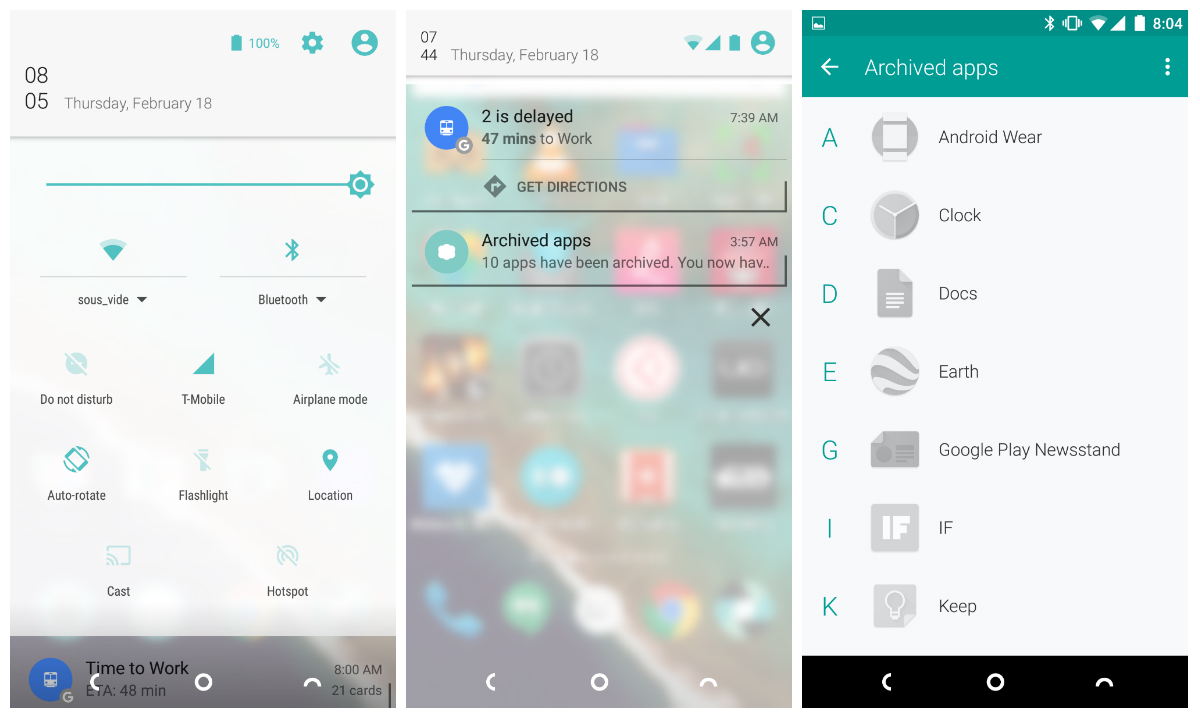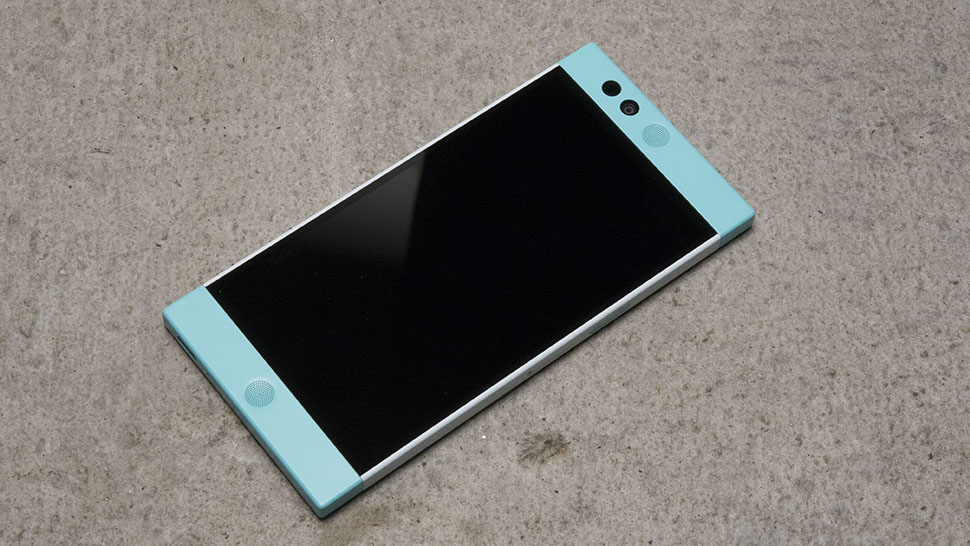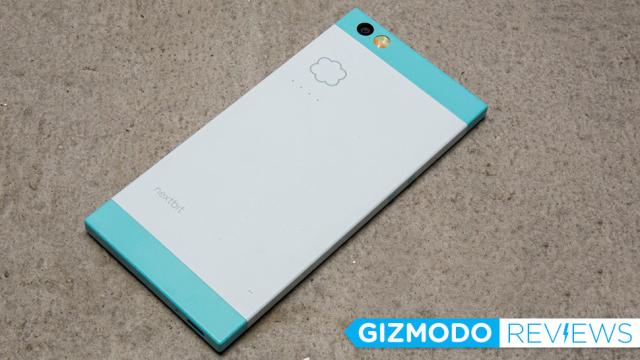Smartphones can be boring. These tiny machines of glass-and-metal have fundamentally changed how we communicate with one another, but they also look incredibly similar. You do a slight upgrade here, more powerful silicon there, all tied up in a familiar rectangular body and suddenly you’ve just made The Year’s Best Smartphone.
But then there’s Nextbit Robin. The Robin is most obviously different in the way it looks. Using an atypical colour palette, the “mint” Robin looks like Googie architecture packed into a 13cm rectangle or a 1950s smartphone sitting on the dashboard of a ’57 Chevy. The black-on-black version isn’t bad to look at either.
It’s different from the multitude of Galaxys and iPhones, mainly because there isn’t any phone like it. Nextbit is a small startup who helped fund the phone through Kickstarter which is something special. Nowadays, you have to be either crazy or sitting on a genius idea to take on the likes of Apple, Samsung, and almost every other major electronics company out there.

Robin’s cloud storage in action. The left two screenshots show Robin’s Home launcher, which comes with an extra feature to see your apps. The far right screenshot shows Robin’s “ghost” icons also working with the Google Now launcher.
Obviously, Nextbit thinks its the latter, and its big idea is rethinking how storage works on your phone. Most phones take advantage of the cloud through individual third-party apps like Google Drive, OneDrive, and iCloud Drive, but the Robin takes the next step by intelligently “offloading” (basically deleting) all the old digital detritus it doesn’t think you need or want anymore. Nextbit stores this data into 100GB of cloud storage allotted to every Robin phone — ready to be summoned at a moment’s notice when connected to the internet.
If you’re someone constantly thumbing Settings > Storage to see if you can fit that one last app on your software-bloated smartphone, listen up. Robin’s cloud abilities create ghost icons of all apps stored in the cloud as well as photos (lets hope video comes soon). One of the best parts is that it saves all your information, so when you go fetch the app from the cloud, you’re already logged in and ready to go.

From left to right: Robin’s reworked settings pan, the notifications menu, and a list of archived apps currently stored in cloud.
While a smart assistant in the cloud feels incredibly futuristic, it’s only a good fit for a certain kind of person. Lots of smartphones (besides iPhones) come with upwards of 2TB of theoretical microSD storage, so running out of storage on a smartphone would actually be quite a feat. If you’re worried about overloading a 32GB smartphone, you should probably get more storage — or at the very least expandable storage, which many phones at the Robin’s price offer.
The Robin’s big cloud features also seem unneeded especially in light of Android’s new Flex Storage feature. It leaves external SD cards more intwined with the smartphone than before, and relying on them isn’t as much of a headache as it used to be. But for that certain someone who thinks 32GB is always enough (but it never is), well, here’s the Robin.

Aside from everything that feels new and unusual, this phone has lots of impressive hardware packed inside. Last year’s Snapdragon 808 — while not exactly the powerhouse like the 820 that will be found in most pricey smartphones in 2016 — is still incredibly capable. The processing power is also a steal at the device’s low price. The Robin also has two front-firing speakers, a full HD display, 3GB of RAM, a not-shitty fingerprint sensor, USB Type-C, and runs on the latest Android software. This isn’t just a gimmick wrapped inside a junk phone.
The only real lapse is its battery. A 2680mAh battery is enough to get you through a full day of light-to-medium use, but once you have to tax the device at all, you’ll be needing your charger come evening. Last weekend, I (randomly) attended a Bernie Sanders rally and after taking a couple dozen pictures and video my battery tanked by 8pm. It only amounted to about 12 hours. Good, but definitely not great. The software also has hiccups with the camera and a few other places, but Nextbit says that’s the fault of early software that will be patched up before any units reach a customer’s hands.

The real polarising issue is the Robin’s design. From polling a few friends, acquaintances, and the one or two strangers I caught glancing, the Robin is either a.) “completely hideous” or b.) “loaded with street appeal.” It’s strangeness — chunky bezels, quirky circle speakers, and cloud-shaped back tattoo — seems to be both appealing and appalling, so really it’s up to you.
But with great usability, stellar hardware, and features that avoid the “gimmick” graveyard, the Robin is an amazing 1.o device. I say one dot zero because the real utility of a cloud phone doesn’t seem like enough right now to keep an everyday shopper from a storage-expandable cheap phone. But if you’re after something different, the Robin definitely fits that description nicely.
Nextbit Robin Specs:
- Network: AT&T, Verizon, T-Mobile, Sprint
- OS: Android Marshmallow with Nextbit Home Launcher
- CPU: Snapdragon 808 processor
- Screen: 13cm 1920×1080 IPS LCD (424 PPI)
- RAM: 3GB
- Storage: 32GB + 100GB Cloud Storage
- Camera: 13 megapixel rear camera / 5 megapixel front camera
- Battery: 2680 mAh
- Price and Availability: US$399 at nextbit.com (not including shipping to Australia).
- Notable extras: Fingerprint sensor, NFC, quick charging, dual front-firing speakers, unlocked bootloader, USB Type-C
- Test notes: Although the 13 megapixel camera is certainly passable, it’s definitely not the best. If you really, really want nice mobile photography, pay attention to the S7 and G5 when they reportedly launch this weekend.
